Tuesday, 14 September 2021
The great complexity of the brain’s mental mapping system
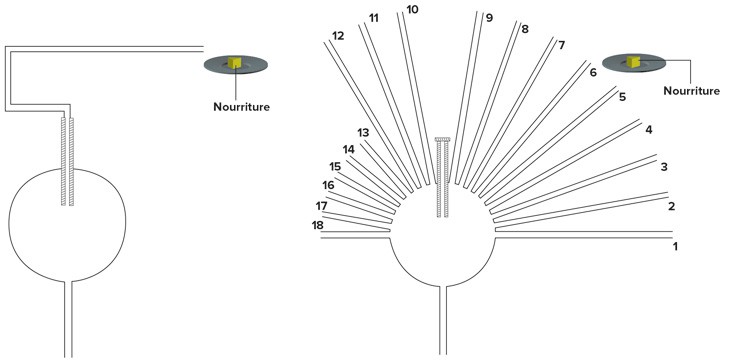
In the 1930s and 1940s, rats’ ability to learn their way through a maze was explained, according to the behaviourist paradigm prevailing at that time, as simply a process of building connections between sensory stimuli and behavioural responses. When a rat found its way through a maze successfully, it reached the final chamber where it received a reward of food, According to behaviourist theory, this reward strengthened the neural connections underlying the associations that the rat had had to make to complete its task successfully. But this reasoning could not explain the surprising observations made in an experiment by U.S. psychologist Edward Tolman in 1948, in which some rats reached their rewards by finding shortcuts through the maze along paths that they had never taken before! (more…)
Memory and the Brain | Comments Closed
Tuesday, 1 June 2021
Quiz about memory
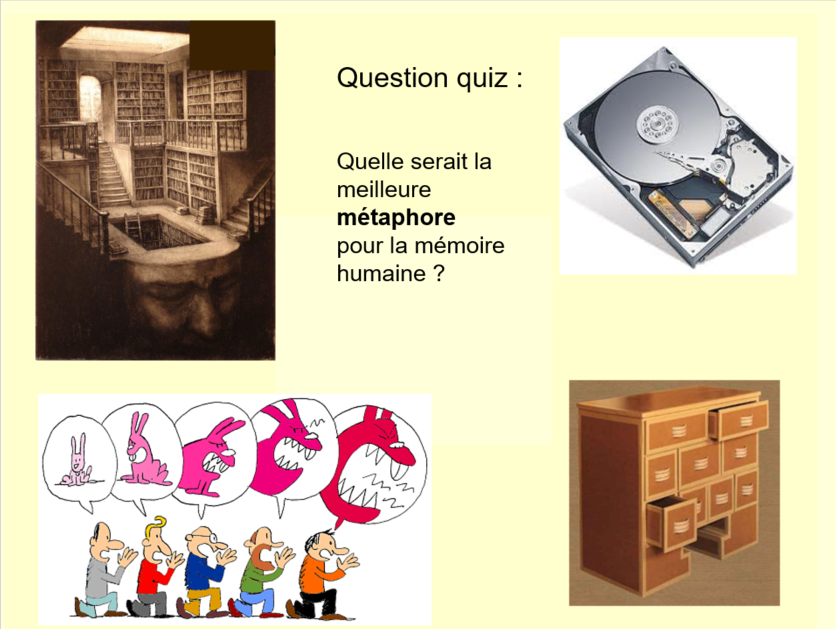 Which of the following is your memory most like: 1) a huge library where all your memories are shelved? 2) a computer hard drive where data are stored in a binary code of 0s and 1s? 3) a dresser with lots of drawers full of memories? 4) the game of telephone, where one person whispers a message to the next until it ends up being distorted? (more…)
Which of the following is your memory most like: 1) a huge library where all your memories are shelved? 2) a computer hard drive where data are stored in a binary code of 0s and 1s? 3) a dresser with lots of drawers full of memories? 4) the game of telephone, where one person whispers a message to the next until it ends up being distorted? (more…)
Memory and the Brain | Comments Closed
Tuesday, 4 May 2021
Neuroscientifically Challenged: a highly educational website about neuroscience
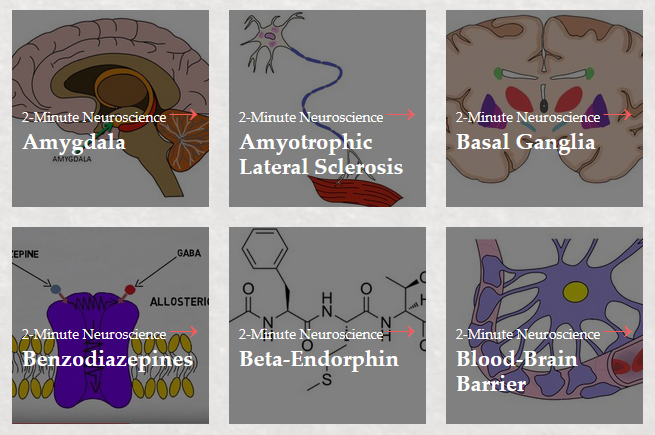 This week I want to tell you about a highly educational website that offers a wealth of information about neuroscience. Its name is Neuroscientifically Challenged, and its author is Marc Dingman. Dingman began blogging about neuuroscience in 2008, as his interest in the subject was growing. He took a break from writing the site in 2010 to concentrate on finishing his doctorate in neuroscience, which he received in 2014, when he also accepted a teaching assignment at his university. Neuroscientifically Challenged is aimed at the general public, but Dingman draws his references directly from peer-reviewed scientific articles and monographs on neuroscience. (more…)
This week I want to tell you about a highly educational website that offers a wealth of information about neuroscience. Its name is Neuroscientifically Challenged, and its author is Marc Dingman. Dingman began blogging about neuuroscience in 2008, as his interest in the subject was growing. He took a break from writing the site in 2010 to concentrate on finishing his doctorate in neuroscience, which he received in 2014, when he also accepted a teaching assignment at his university. Neuroscientifically Challenged is aimed at the general public, but Dingman draws his references directly from peer-reviewed scientific articles and monographs on neuroscience. (more…)
From the Simple to the Complex | Comments Closed
Monday, 19 April 2021
Evolution : a branching pattern like a bush, not a linear one
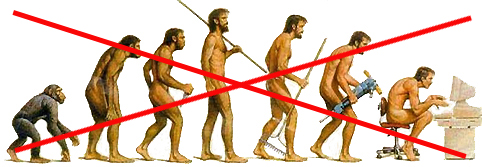
The word “hominids” is often used to refer to the human line that diverged from chimpanzees some 6 or 7 million years ago. It includes not only all the species of the genus Homo, bus also some related genera, such as Australopithecus, that are now extinct. The evolutionary history of our human line has been determined from findings of fossils, some consisting of just a few bone fragments or teeth. These fossils have shown that human evolution has followed a branching pattern, like a bush, and not a linear pattern like you see above, where the chimpanzee starts losing hair, walking more upright, and becomes Homo sapiens, only to end up working hunched over again, first with an industrial tool and then at a computer. There are various versions of this image—some show Homo sapiens in a suit and tie, or riding a bicycle—but all of them convey several false ideas about human evolution. (more…)
Evolution and the Brain | Comments Closed
Thursday, 1 April 2021
The incredible speed of synaptic transmission
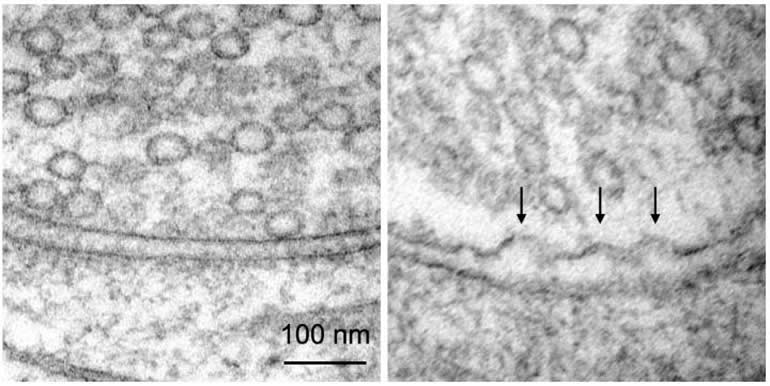
Sometimes you think you know all about a subject because you’ve been making presentations about it for years, or even decades. But then you read one article that makes you realize just how much you didn’t know. That’s what just happened to me. The subject was synaptic transmission, and the article was Synaptic vesicles transiently dock to refill release sites, published in the journal Nature Neuroscience in September 2020. The principal authors of this study, Grant F. Kusick and Shigeki Watanabe of the Johns Hopkins University School of Medicine in the United States, used a cell-imaging technique called “zap-and-freeze” to analyze how neurons release neurotransmitters into synapses. What these authors specifically wanted to understand was how the synaptic vesicles near the tip of an axon (the synaptic button), which fuse with its plasma membrane to release neurotransmitters into the synaptic gap, subsequently form again so that the neuron can be ready to handle the next nerve impulse. Because several tens or even several hundreds of nerve impulses can all arrive at the same synaptic button at one time, the authors reasoned, these vesicles must re-form extremely rapidly for there to be enough of them ready to release neurotransmitters again as soon as the next impulse arrives. (more…)
From the Simple to the Complex | Comments Closed







